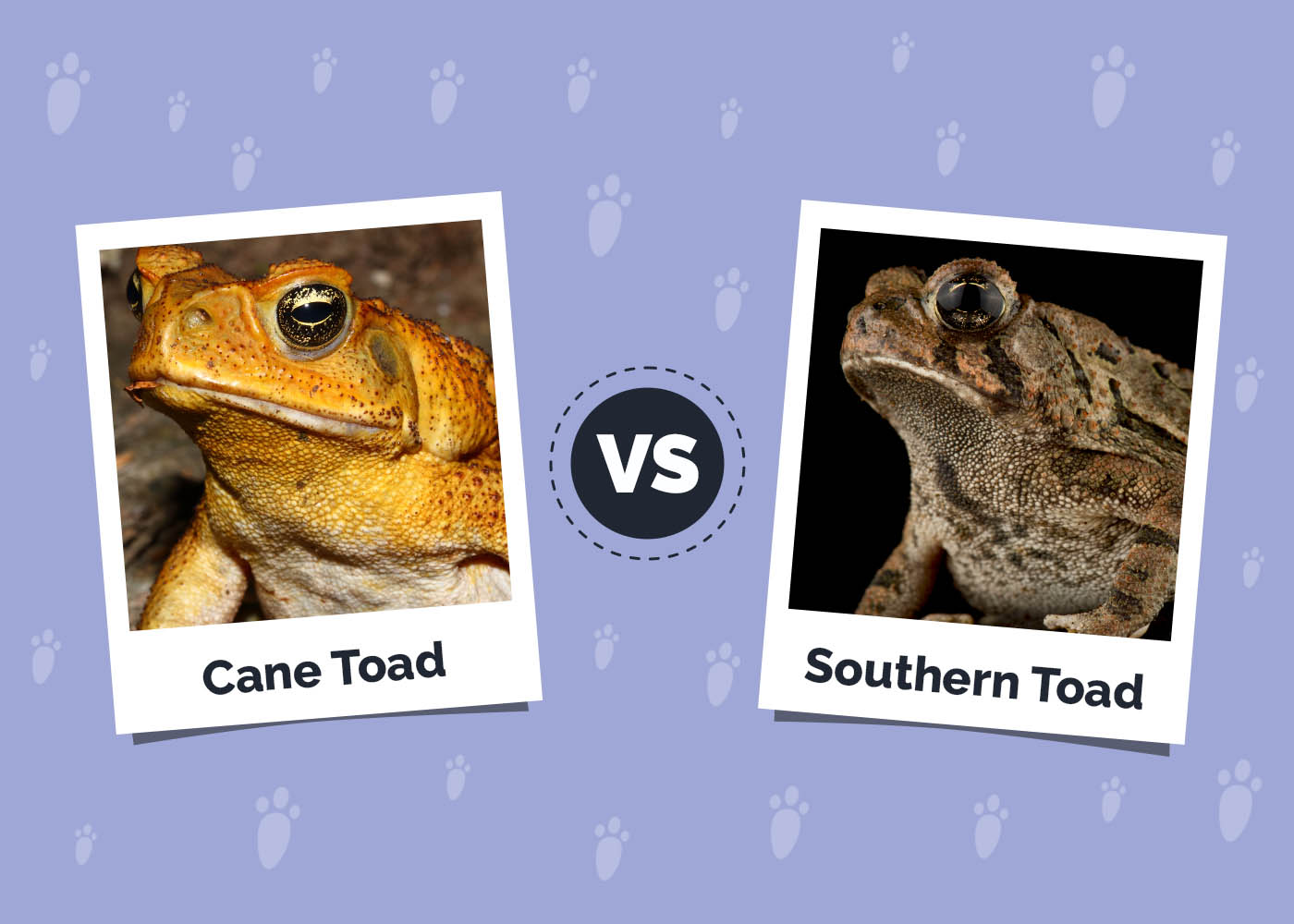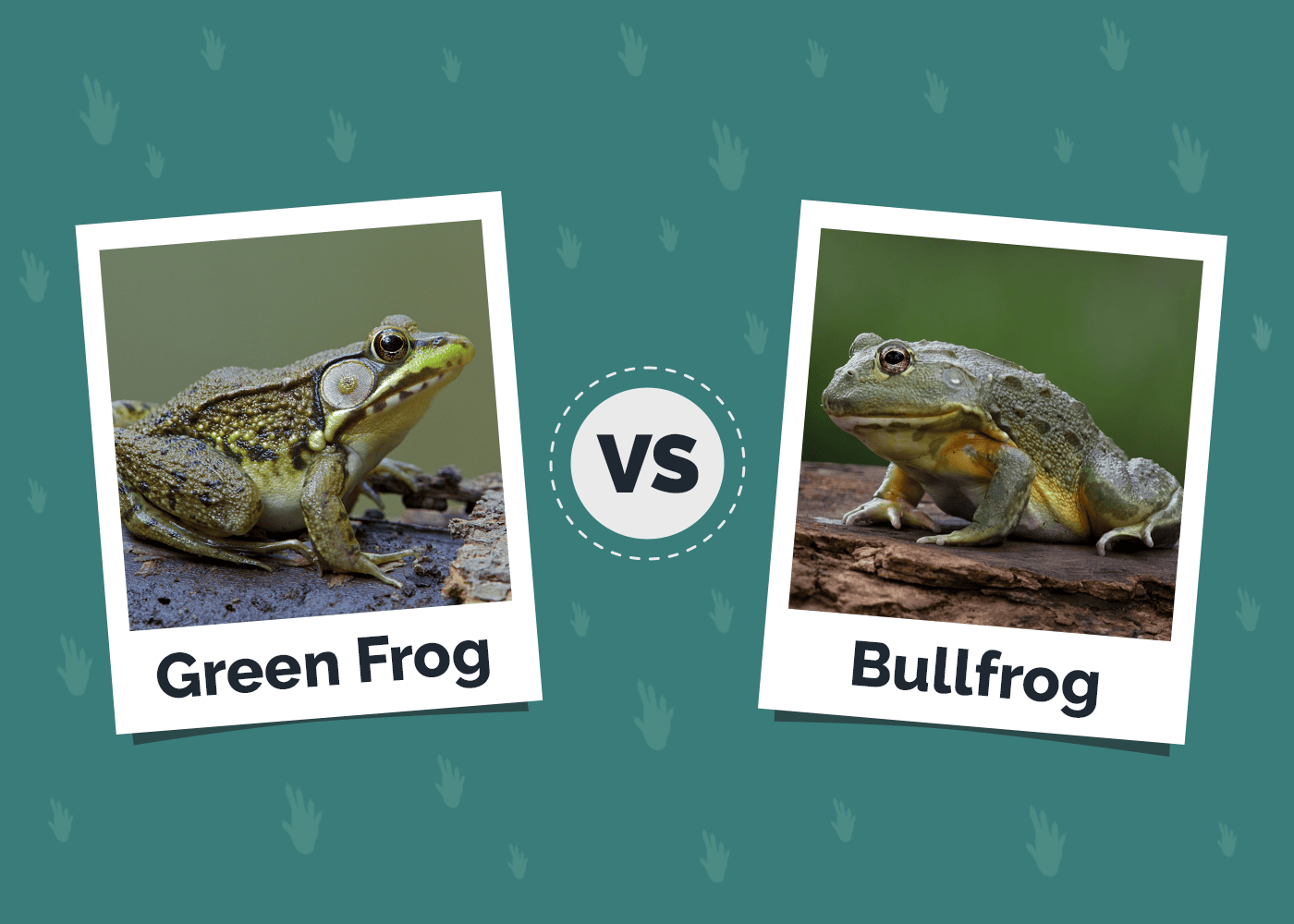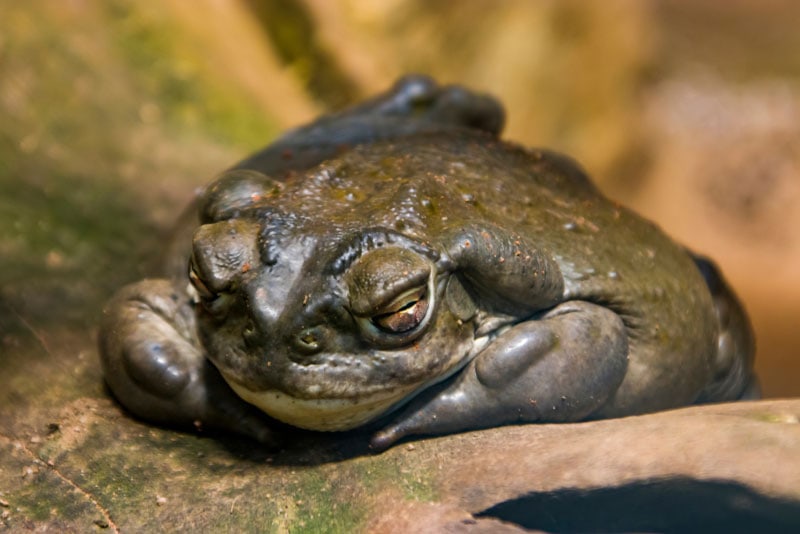Do Frogs Sleep? Vet Reviewed Facts & FAQ

Updated on
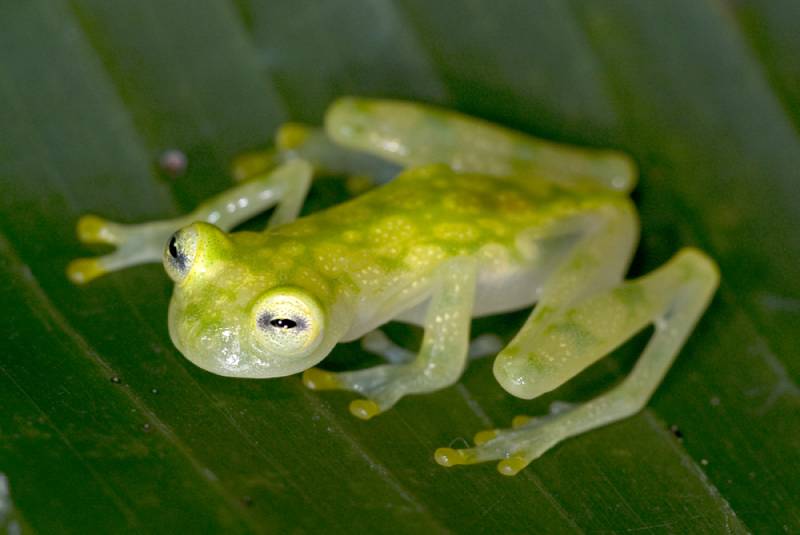
Click to Skip Ahead
Have you ever wondered if frogs sleep? These fascinating creatures may not snuggle up in beds like we do, but they indeed experience periods of rest. When we think of animal sleep, we think of how our cats and dogs sleep comfortably as they rest and snooze into dreamland. But what about frogs, can you imagine these animals snoozing the same way that cats and dogs do? Do frogs actu sleep?
The answer is a resounding yes! However, their sleep is quite different from what we’re used to. In short, they do sleep, but they still remain alert!
In this article, we’ll dive into the intriguing world of frog slumber and explore the unique sleep patterns and behaviors that make their restful moments so captivating!
Frog Sleep Explained
Frog sleep is an intriguing phenomenon with several notable characteristics. First, during their sleep, frogs exhibit periods of inactivity and reduced responsiveness. They become less aware of their environment, conserving energy for their nocturnal endeavors, but just enough alertness for potential threats.
Additionally, their metabolic rate decreases, allowing them to achieve a state of rest and rejuvenation.
Frogs also showcase a wide range of resting positions. Some prefer to sit upright, while others may assume a crouched position. These postures help frogs maintain stability and conserve energy during their sleep. Certain species can even take it a step further and bury themselves in the substrate or hide amidst foliage, utilizing their surroundings as a natural shelter.
Understanding the Frog’s Sleep Pattern
Frogs, as remarkable amphibians, have evolved distinct sleep patterns to adapt to their environment. Unlike humans or other mammals, frogs are ectothermic. This means that their body temperature is regulated by their surroundings. This crucial difference influences their sleep behavior significantly.
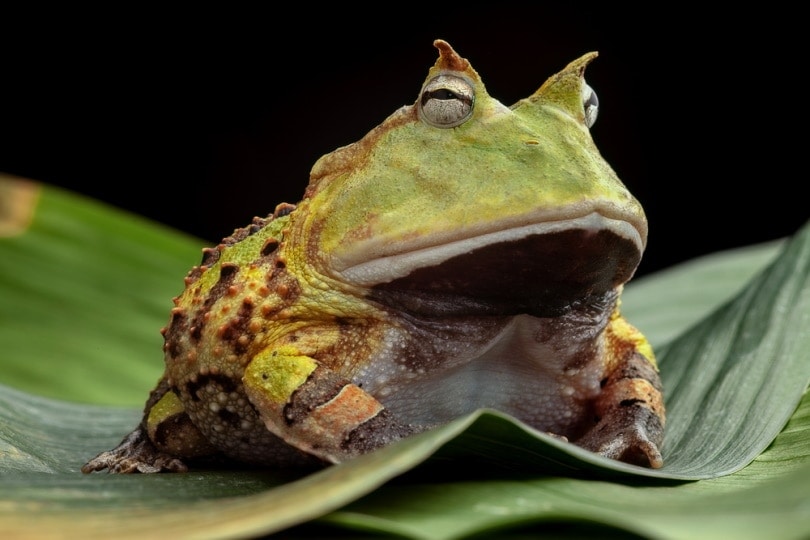
The Nocturnal Behavior of Frogs
Most frogs are primarily nocturnal creatures. As the sun sets and darkness blankets their surroundings, these amazing amphibians come to life. Their heightened activity during the night is attributed to various factors, such as avoiding predators and taking advantage of a cooler environment for optimum performance.
Daytime Resting and Shelter Seeking
When the sun rises, frogs seek shelter and take a break from their active nocturnal lifestyle. During the daytime, you might find them nestled in cool, damp places, hidden away from prying eyes.
These cozy nooks provide them with the restful moments they need to recharge for another night of adventure.
The Nictitating Membrane
When picturing a sleeping creature, the first thing you visualize is their eyes closed. Well, this rule doesn’t necessarily apply to frogs as, unlike mammals, they do not have eyelids.
With that said, you may be wondering how frogs manage to sleep without eyelids. Instead, they rely on a translucent membrane known as the nictitating membrane. This remarkable adaptation allows them to protect their eyes while still perceiving light and movement in their surroundings. So, even when they’re in a resting state, frogs still remain alert of their surroundings and to potential threats.
Frog Sleep vs. Mammal Sleep
While frogs do sleep, their slumber differs significantly from mammalian sleep. Unlike mammals that experience distinct rapid eye movement (REM) and non-REM sleep cycles, frogs have a different sleep structure.
Their sleep is characterized by periods of inactivity, reduced responsiveness, and a decreased metabolic rate. It’s a unique sleep pattern that has evolved to suit their specific needs as amphibians.
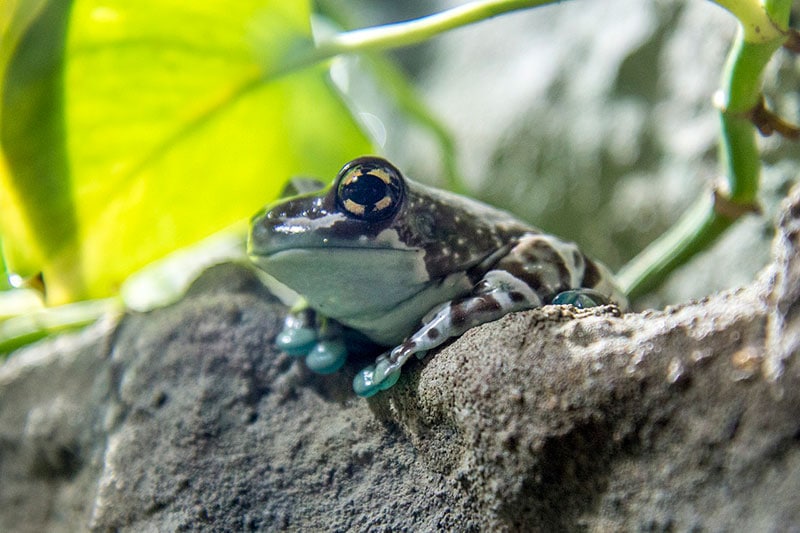
How Do Frogs Sleep?
Curious about how frogs sleep without beds or pillows? And how do they sleep without eyelids? Well, frogs can sleep in various positions! You might find them sitting or crouching, appearing as if they’re merely taking a pause in their activities.
Some frog species even employ ingenious tactics, such as burying themselves in the substrate or hiding amidst vegetation, both for protection and camouflage while they rest.
Do Different Frog Species have Different Sleep Patterns?
Just as sleep patterns vary among different mammalian species, frogs also exhibit diversity in their slumber routines.
Some frogs are primarily daytime sleepers, while others are more active during the night. These variations in sleep patterns can be attributed to their natural habitats, unique behavioral traits, and evolutionary adaptations that have shaped their survival strategies.
Daytime Sleepers vs. Nocturnal Sleepers
While many frogs are known for their nocturnal habits, there are exceptions to this rule. Some frog species have adapted to daytime activity and rest during the night.
These diurnal or crepuscular frogs have evolved to take advantage of specific ecological niches and the availability of prey or other resources during daylight hours.
Factors Affecting a Frog’s Sleeping Patterns
The sleep patterns of frogs are influenced by several factors. Their natural habitats, such as rainforests, deserts, or wetlands, play a crucial role in shaping their sleep behaviors.
Additionally, specific behavioral traits and evolutionary adaptations contribute to the diverse sleep patterns observed among different frog species.
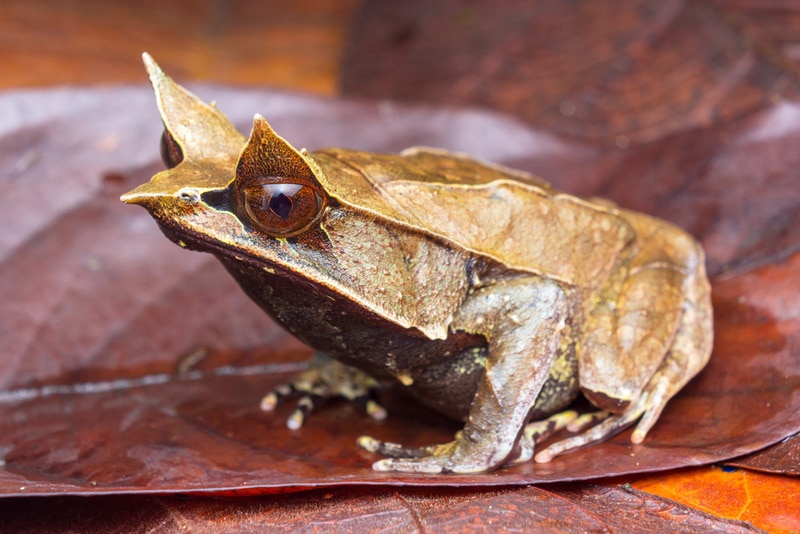
Do Pet Frogs Have a Different Sleep Pattern?
When it comes to pet frogs, their sleeping patterns can vary depending on the species and their natural behavior. While some pet frogs may exhibit sleep patterns similar to their wild counterparts, others might have altered sleep patterns due to captivity and other environmental factors.
Pet frogs, especially those kept in indoor enclosures, may experience some modifications in their sleep patterns compared to their wild counterparts. Factors such as artificial lighting, temperature regulation, and the absence of natural cues can affect their sleep routines. Additionally, some pet frogs may become more diurnal or nocturnal depending on their owners’ schedules and the environment they are kept in.
As frog owners, it’s important to note that providing a suitable habitat for pet frogs is crucial for their overall well-being, including their sleep patterns. Mimicking their natural habitat as closely as possible can help promote a healthier sleep routine. This includes providing appropriate lighting cycles, temperature gradients, hiding spots, and opportunities for natural behaviors like climbing, burrowing, or perching!
Final Thoughts
In conclusion, frogs do sleep! While their sleep patterns may differ from those of mammals, frogs have their unique ways of achieving periods of rest and rejuvenation. Whether they’re snoozing during the day or hopping about under the moonlit sky, these remarkable amphibians never cease to amaze us with their extraordinary adaptations.
So, the next time you spot a frog nestled in a cozy corner or witness it hidden amidst foliage, remember that it’s not just resting—it’s experiencing a slumber tailored to its amphibious lifestyle.
Frogs may not have beds or blankets, but they certainly know how to make the most of their well-deserved moments of rest in their mesmerizing world.
Featured Image Credit: worldswildlifewonders, Shutterstock


